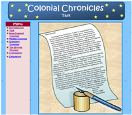The internet is a powerful and useful tool. For example, on page 342 of Integrating Educational Technology into Teaching, the authors give a suggestion to use the internet to gather data relating to global warming. Instead of simply being told about the problem, this internet activity allows students to construct an understanding of the effects of carbon dioxide on global temperatures. After collecting carbon dioxide levels and temperature readings from the internet, students graph the data and discuss the effects of carbon dioxide on the biosphere and atmosphere. Because most students already know how to surf the internet, their focus will be on the data they gather and not the technology itself, making the technology a seamless part of the lesson. However, Excel is a tricky program for fifth grade students, so their focus may shift away from the concepts to the technology when they begin to graph the data. Once they figure out how to create a graph in Excel, they’ll once again begin to concentrate on the content.
When students are gathering their research on global warming, they could use the Web 2.0 application called “NoteStar” to take notes and cite sources. When they logon to NoteStar (a free web resource found at http://notestar.4teachers.org/), they can visit any site, click on the NoteStar (NoteCard) icon, and jot their notes in the popup box. NoteStar automatically enters the URL, access date, and site name. It then prompts the student to gather the author’s name, last update, and other information necessary for a bibliography. Using this resource will help reduce plagiarism (it marks if students copy and paste quotes) and ensure accurate bibliographies.
During the lesson, students actively use the internet, but other technology is used “behind the scenes” to measure the carbon dioxide and global temperatures. As part of the lesson, the teacher could discuss scientific tools used to measure both. Since there is a PA standard relating to student understanding of scientific tools of measurement, this focus on the technology itself would be warranted. It would then be interesting to have the students consider how scientists would track the effects of global warming if the internet did not exist. Since rising carbon dioxide levels and temperatures are a global problem, we need a global tool to quickly gather the data. Without the internet, how would scientists be able to understand the full implications of the problem? While scientists could fax their data to each other, the process would be more time consuming. This could lead to an interesting discussion about how technology improves life, which could be compared and contrasted with the social studies topic of the industrial revolution. Therefore, the project could help the students construct understandings across the curriculum, which what every administrator wants to see happen.
Subscribe to:
Post Comments (Atom)





0 comments:
Post a Comment